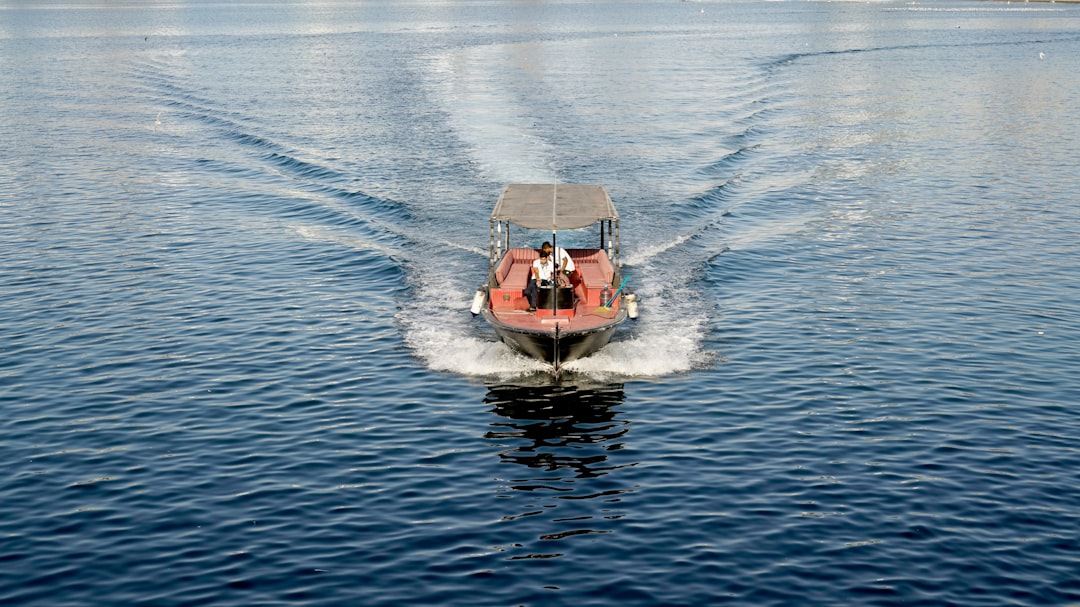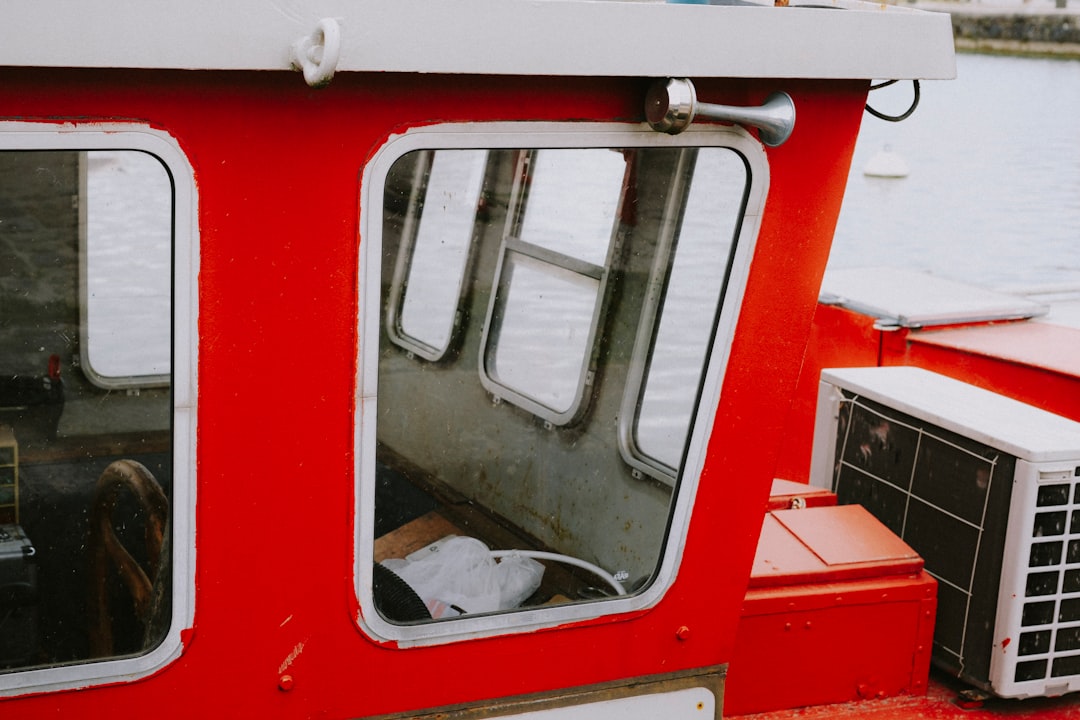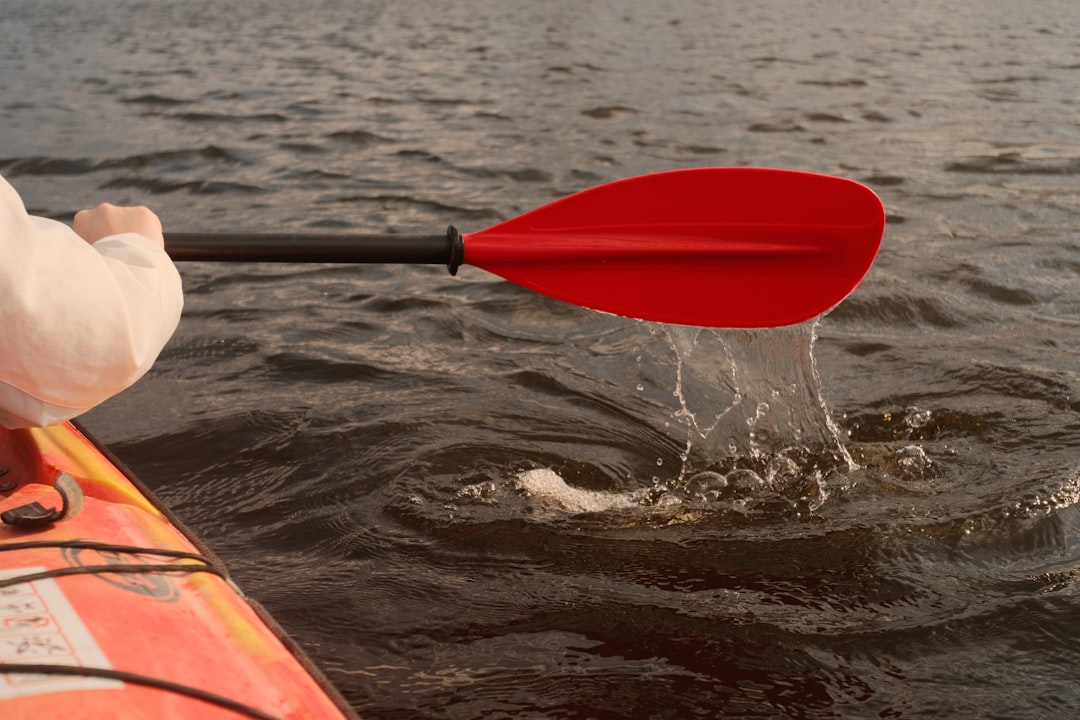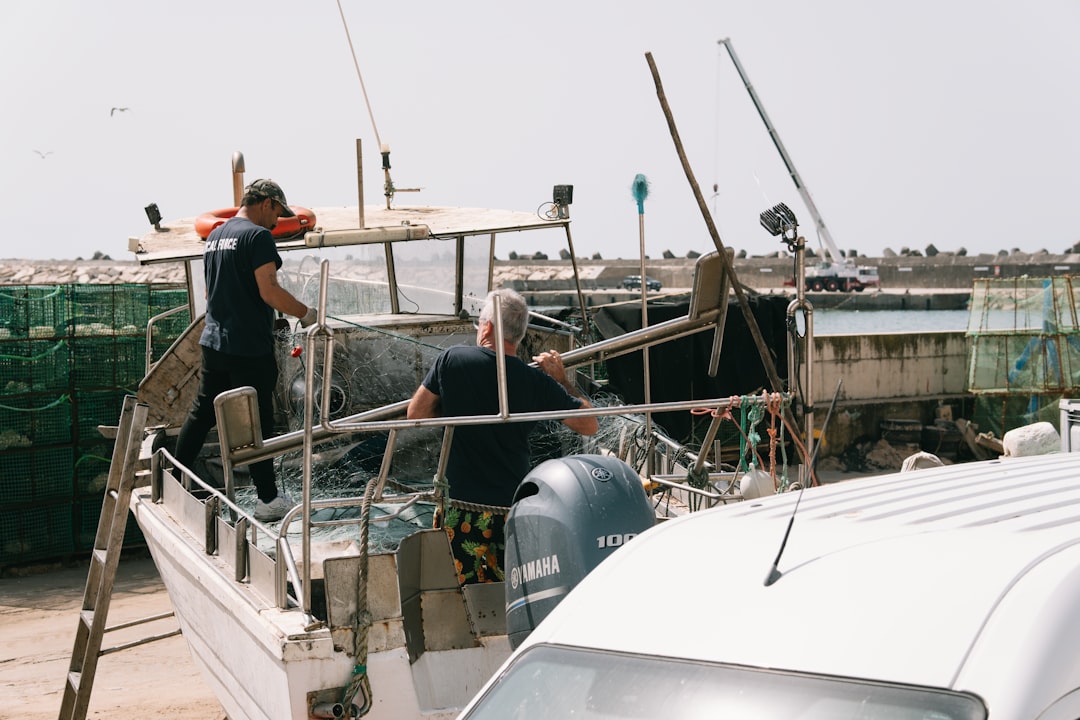

Engage prospects with a scan and streamline customer engagement with FREE QR code marketing tools by Sona – no strings attached!
Create a Free QR CodeFree consultation

No commitment

Engage prospects with a scan and streamline customer engagement with FREE QR code marketing tools by Sona – no strings attached!
Create a Free QR CodeFree consultation

No commitment
In today's digitally connected marketplace, businesses offering boat cleaning services face mounting competition and rising customer expectations. People now seek not only convenience but also frictionless access to evaluate, compare, and book trusted marine service providers. Many operators still struggle with challenges such as missed high-value prospects who browse their offerings but never fill out a contact form, and difficulty tracking which touchpoints actually generate new business. Traditional analog tactics like paper brochures, printed coupons, and static dockside signage struggle to keep up with modern buyers who expect transparent information and instant engagement.
QR codes are transforming how boat cleaning services bridge this physical-digital divide, letting a single scan provide potential customers with immediate access to eco-friendly service options, cost comparisons, quote requests, automated Google reviews QR, or up-to-the-minute safety guidelines. Customers no longer need to hunt for information or wonder about next steps: every printed invoice, dock sign, or equipment tag can serve as a gateway, removing both friction and ambiguity from the experience. This approach not only meets evolving buyer expectations, but also helps operators surface previously anonymous, high-intent visitors who would otherwise go untracked.
This article explores how thoughtfully deployed QR code strategies can unlock new lead generation opportunities, streamline bookings, and provide actionable data to scale your boat cleaning business. By integrating QR codes across key touchpoints, service providers can reduce lost opportunities, support compliance and sustainability initiatives, and deliver a seamless customer experience, all while ensuring that valuable engagement signals do not slip through the cracks.

Many boat cleaning operations find personalization of the customer journey challenging, especially when much of their audience remains anonymous or untracked until a late-stage booking request. This often leads to missed opportunities for engagement, upsell, or timely follow-up. QR codes directly address this by turning every point of contact such as dock signage, printed invoices, and service vans into an interactive bridge between offline interest and real-time digital action, capturing intent much earlier in the decision cycle.
When you design QR-enabled touchpoints with clear goals, a compelling call to action, and CRM-integrated tracking using Sona QR’s product overview, you build a system that accelerates sales cycles and improves customer experience. You also replace older, static processes like paper rate cards or manual feedback forms with dynamic, measurable alternatives that capture higher intent, reduce friction, and enable relevant follow-up.
Modern QR platforms like Sona QR support code creation, journey mapping, A/B testing, and CRM syncing, so leads are never missed even when visitors otherwise remain anonymous. The result is a connected, measurable path from first scan to paid service.

Boat cleaning services operate in a landscape where missed or delayed engagement with prospects can mean lost business to a competitor. Static rate cards, unread brochures, or generic email campaigns often fail to reach the right, high-intent audience, leaving operators with incomplete data and little visibility into which outreach delivers measurable value.
By giving every physical surface a digital next step, QR codes shorten decision cycles and equip teams to act on real-time signals. They also create a common data layer across print, signage, and in-person interactions, so you finally know which channels pull their weight and where to lean in.
By resolving these friction points, QR codes help ensure that every touchpoint, whether digital or physical, works harder to convert curiosity into action and provides insight into the customer journey. The net effect is better offline attribution, more predictable pipeline, and higher return on every marketing dollar.
A major challenge for marine service operators is dealing with incomplete prospect records or outdated data, which makes it hard to personalize outreach or upsell relevant services. QR codes help by supporting different formats and actions that map to distinct phases of the customer journey, from awareness through advocacy.
Selecting the right format for each placement improves scan-through rates and reduces drop-off. Combine this with dynamic codes and you can adapt fast, test offers, and refine based on performance.
Dynamic codes are especially valuable for rotating promotions, compliance updates, and event-based content. Static codes work best for evergreen resources like safety guidelines or a general contact card.

Many boat cleaning services rely on traditional touchpoints such as dock banners, vehicle branding, or printed invoices, but often lack visibility into what actually drives inquiry or repeat business. As a result, valuable engagement signals can go unnoticed, and new opportunities for cross-sell or retention are not surfaced in time.
QR codes make these everyday assets measurable and actionable. By placing the right code with the right message in the right environment, you turn underutilized surfaces into lead engines and customer experience enhancers.
By strategically inserting QR codes in these moments, operators reduce marketing waste and capture real-time signals that feed smarter targeting and continuous campaign refinement.

Many cleaning businesses struggle to track which customer touchpoints matter most, resulting in incomplete records and unmeasured marketing spend. QR code use cases help resolve this by mapping engagement across the full customer journey and creating clear calls to action that drive measurable outcomes.
The most effective use cases align with the stages of awareness, consideration, conversion, and advocacy. Each scan is a data point that tells you what a person wanted, where they were, and how ready they might be to buy.
In each example, the focus is on closing the gap between physical and digital, transforming unmeasured interest into actionable signals that drive better marketing and service decisions.
A persistent frustration in marine services is the inability to segment or retarget high-fit prospects who browse materials or ask questions on the dock but never fill out a form. QR code scans offer new visibility into individual and account-level intent, even for otherwise anonymous walk-up prospects.
By placing distinct codes across different surfaces and moments, you can automatically segment people based on what they scanned, where they were, and when they did it. These segments feed CRM and ad platforms, enabling precise follow-up and retargeting with Sona’s retargeting playbook.
With Sona QR, each code becomes a smart entry point that captures these signals in real time. Over time, you build a living database that reflects how boaters actually engage with your brand across docks, events, and services.
Boat cleaning companies often find it challenging to tie offline and online campaigns together, which creates disjointed experiences and weak attribution. The result is lost opportunities as customers move from a brochure to a boat show to the website without a coherent data trail.
QR codes provide continuity by capturing engagement at each step and feeding that data into centralized reporting. With the right setup, you can connect every scan to a destination, a campaign, and a follow-up sequence.
With integrated analytics from a platform like Sona QR, scan data flows into your CRM for automatic tagging, sales alerts, and audience building. This creates a connected offline-to-online funnel that moves people from first interest to scheduled service with fewer leaks.
The best QR campaigns start with clear goals and end with measurable results. Use this checklist to plan, deploy, and optimize your efforts so each scan leads to a concrete next step and revenue impact.
Before launching, align stakeholders across marketing, operations, and field crews. Clear ownership for code creation, placement, and follow-up ensures consistent execution and faster iteration.
Identify your most pressing challenge and choose a QR campaign designed to solve it. If lead volume is low, prioritize scan-to-quote flows in high-traffic dock areas. If reviews lag, focus on scan-to-review prompts on invoices. If upsell potential is untapped, target post-service handouts that link to membership plans or add-on detailing options.
Select the code format based on your need for flexibility and attribution. Static codes work for evergreen resources like safety sheets or contact cards. Dynamic codes are recommended for most marketing because you can update destinations, add UTM parameters, and track results without reprinting.
Design the code and surrounding frame to stand out and communicate value. Include a visible CTA such as Scan to get a quote in 30 seconds and ensure mobile-optimized destinations load fast on weak marina Wi-Fi.
Roll out codes to the touchpoints that matter most in your acquisition and retention funnel. Start with dock signage, service vehicles, equipment tags, invoices, and direct mail, then expand to events and digital signage based on results.
Monitor scan volume, conversion rates, and drop-off points weekly. Compare results by marina, offer, and device to understand patterns. Feed learnings into your design, placement, and messaging updates.
Many operators cite the inability to connect offline campaigns like flyers or banners to actual revenue as a top challenge. QR codes change that by creating a direct line from scan to booking, review, or referral and by recording context such as location and time.
When you integrate scan data into your CRM and analytics tools, you can stop guessing and start optimizing. You can see which marinas produce the best leads, which messages convert, and how long it takes to move from first scan to scheduled service.
With this end-to-end visibility, operators avoid assumptions and address missed opportunities before they impact results. In short, you turn scans into signals and signals into bookings.
The biggest gains from QR codes come when you treat them as a system rather than a one-off test. That means aligning code design, placement, data capture, and follow-up so every scan gets the right response.
Educating crews and customers is equally important. A well-placed code with a clear benefit and a helpful explanation from your team will always outperform a pretty design without context.
When you combine these best practices, you create a flywheel of engagement that feeds better targeting and more predictable growth.

Case studies across marine services show how quickly QR campaigns can convert anonymous interactions into measurable growth. Even small operations can compete with larger providers by making every surface a digital entry point and every scan a recordable signal.
Use these examples as inspiration and adapt them to your constraints and goals. The key is clarity of outcome and operational follow-through.
Innovation emerges when technology supports real, human moments. QR codes are most powerful when they make it easier for people to learn, decide, and follow through.
Many QR campaigns underperform because they lack context or ignore real-world behavior. To maximize results, anchor each code in a specific moment of need and offer a destination that is fast, mobile-optimized, and valuable.
Avoid the temptation to point every code to your homepage. The best campaigns match intent to outcome: a quote code opens the quote page, a review code opens the right review platform, and a safety code opens the correct instruction sheet.
Through thoughtful design and consistent follow-through, QR campaigns evolve from novelty to necessity in your acquisition and retention strategy.
Modern buyers expect frictionless, data-rich interactions, which many marine service providers struggle to deliver with legacy tactics and limited analytics. By deploying QR codes thoughtfully across key touchpoints, boat cleaning businesses can surface anonymous engagement, respond quickly to prospect signals, and create a measurable pathway from first curiosity to loyal advocacy. This approach safeguards marketing spend and brings new clarity to what drives revenue.
Integrating QR codes into boat cleaning services offers more than convenience. It empowers operators to capture and nurture interest that would otherwise go unnoticed, replace static outreach with trackable engagement, and personalize follow-up at every stage. With platforms like Sona QR for code management and Sona.com for attribution, you can connect scans to revenue and make QR codes an engine for predictable growth. Start creating QR codes for free. Now is the time to turn every physical surface into a digital entry point and every moment of interest into a moment of action.
QR codes have transformed boat cleaning services from traditional, manual scheduling and service tracking into seamless, tech-enabled customer engagement channels. Whether it’s simplifying appointment bookings, providing instant access to service details, or enabling real-time feedback, QR codes replace cumbersome processes with quick, mobile-friendly actions that enhance customer satisfaction and operational efficiency. Imagine clients effortlessly accessing personalized cleaning packages or service history with a simple scan, boosting trust and repeat business.
With Sona QR, you can create dynamic, trackable QR codes in seconds, update service offerings instantly without reprinting, and connect every scan to valuable customer insights and revenue growth. No more missed follow-ups or outdated information—just smarter, more responsive service delivery that keeps your boat cleaning business ahead of the tide. Start for free with Sona QR today and turn every scan into a loyal customer and a cleaner, more profitable business.
The best strategies include deploying QR codes on high-traffic touchpoints like dock signage, vehicles, invoices, and brochures to enable instant quotes, bookings, reviews, and eco-friendly information while integrating scan data with CRM systems for targeted follow-up and campaign optimization.
Promote effectively by using QR codes across physical assets such as dock banners, service vehicles, equipment, invoices, and direct mail to provide seamless digital access to service details, quotes, reviews, and booking options, supported by clear calls to action and ongoing data tracking to refine offers and placements.
Essential services typically include eco-friendly cleaning packages, detailing plans, safety compliance information, maintenance reminders, and add-on services such as teak restoration and annual detailing, all of which can be showcased and promoted via QR-enabled touchpoints.
You can find reputable services by scanning QR codes placed on dock signage, service vehicles, or brochures at local marinas, which provide immediate access to trusted providers, cost comparisons, and booking options, or by searching online platforms integrated with QR code marketing.
Regular boat cleaning and maintenance protect vessel safety and appearance, ensure compliance with environmental and safety standards, support eco-friendly practices, extend the lifespan of boat surfaces and equipment, and encourage repeat business through maintenance reminders and loyalty programs promoted via QR codes.
Use Sona QR's trackable codes to improve customer acquisition and engagement today.
Create Your FREE Trackable QR Code in SecondsJoin results-focused teams combining Sona Platform automation with advanced Google Ads strategies to scale lead generation

Connect your existing CRM

Free Account Enrichment

No setup fees
No commitment required

Free consultation

Get a custom Google Ads roadmap for your business






Launch campaigns that generate qualified leads in 30 days or less.
